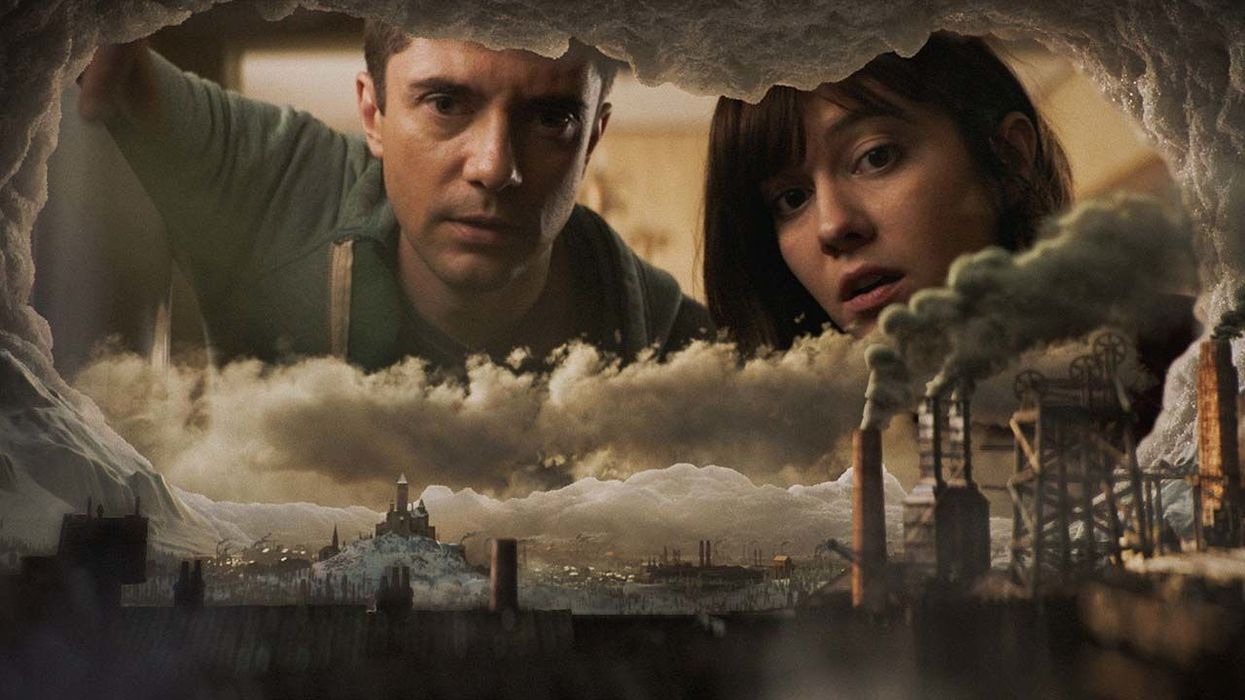David Fincher, Tim Miller, Jennifer Yuh Nelson, and Jerome Denjean Discuss ‘Love, Death & Robots’
Adult animation is having a moment, and Love, Death & Robots is leading the way.

For the majority of my life, animation has been relegated to children's fare. With the advent of shows like South Park, The Simpsons, and even Family Guy, animation took off on television in the early 2000s. That paved the way for animators to break out of the kid-friendly zone and challenge themselves with adult storylines and characters.
Still, every animated venture for adults always seemed like a risk, no matter what creative force was behind it.
That was a distinctly western philosophy, since anime and other forms of animation have been taking on adult themes for a long time.
Well, those times have certainly changed. And streaming has allowed platforms to take more risks and open themselves up to more serious adult animation fare.
Recently, the Annecy International Animation Film Festival streamed an hour-long conversation between the minds behind Netflix’s second season of Love, Death & Robots. Involved in the conversation was the creator and executive producer Tim Miller, executive producer David Fincher, supervising director Jennifer Yuh Nelson, and visual effects supervisor Jerome Denjean from Blur Studio.
They talked about how risky it was for Netflix to believe in a project like this, and how happy they are that it's being embraced.
“The way I felt is that there was not a lot of adult animation in the west, and particularly not in America, and particularly not at the budget levels that allowed for really high-end CG like what was going on at Pixar and DreamWorks for kids,” Miller said. “And we felt it was time to do that for adults.”
He was certainly right. There were plenty of short films out there, but as a viewer, you had to seek them out amongst a noisy playing field of the Internet. And not all of them were up to a certain quality.
“[The series] was born from a desire to want to play in a sandbox where the animation didn’t have to be singing furry animals,” said Fincher. “They could kill each other once in a while.”
Miller said, “There was really nothing like this, if there was anthology it was live action, and more often than not it didn’t work. Certainly, there was no anthology adult animation. Luckily for us they were like, ‘All right, we’ll take a risk on this.’”
Netflix's risk paid off, but they couldn't have asked for a more talented team of producers and supervisors behind the scenes. These were people dedicated to making sure the artistic vision and quality came to the forefront.
And they were able to showcase something unique and still commercial.
“It proved what everyone wanted to do was possible,” said Yuh Nelson. “When films like Ghost in the Shell and Akira were coming out, people would say ‘Why can’t we do that here?’ The barrier to making this stuff was the worry that people weren’t actually gonna watch. And the fact that people did watch made the whole gamble pay off.”
Well, many people did watch, and the show became successful enough that Netflix greenlit season two, which is out now, and a third season they say is coming very soon.
According to Denjean, “What really made it different was the idea of a collective. Suddenly we were giving a voice to smaller and medium-sized studios that don’t have the bandwidth to do something like this by themselves.”
These studios may not be behemoths like Pixar, but they had their own artistic integrity and were eager to showcase the work. Plus, being on Netflix gave them access to a global audience, and they didn't have to worry about box office.
“There aren’t a lot of venues where you can bring people who are in competition with one another and put them in the same sandbox and play together,” said Fincher.
Miller added that animation has actually become an artform that doesn't bar everyone access now. Users can animate at home with the right programs, and those costs have come down too.
He said, “Animators used to say things like ‘If only I could get into a big studio,’ or ‘If only I could get my hands on the right software.’ How far has the industry come in the last 20 years that they’re doing all of this on Blender? It’s all free software, the machines cost… not $40,000 like when I started out. Anyone can do this, and the tools are there to do something quite sophisticated.”
If you're an animator, I hope that inspired your next project! Have you watched the latest season on Netflix yet? What were your favorite episodes?
Let me know in the comments.











